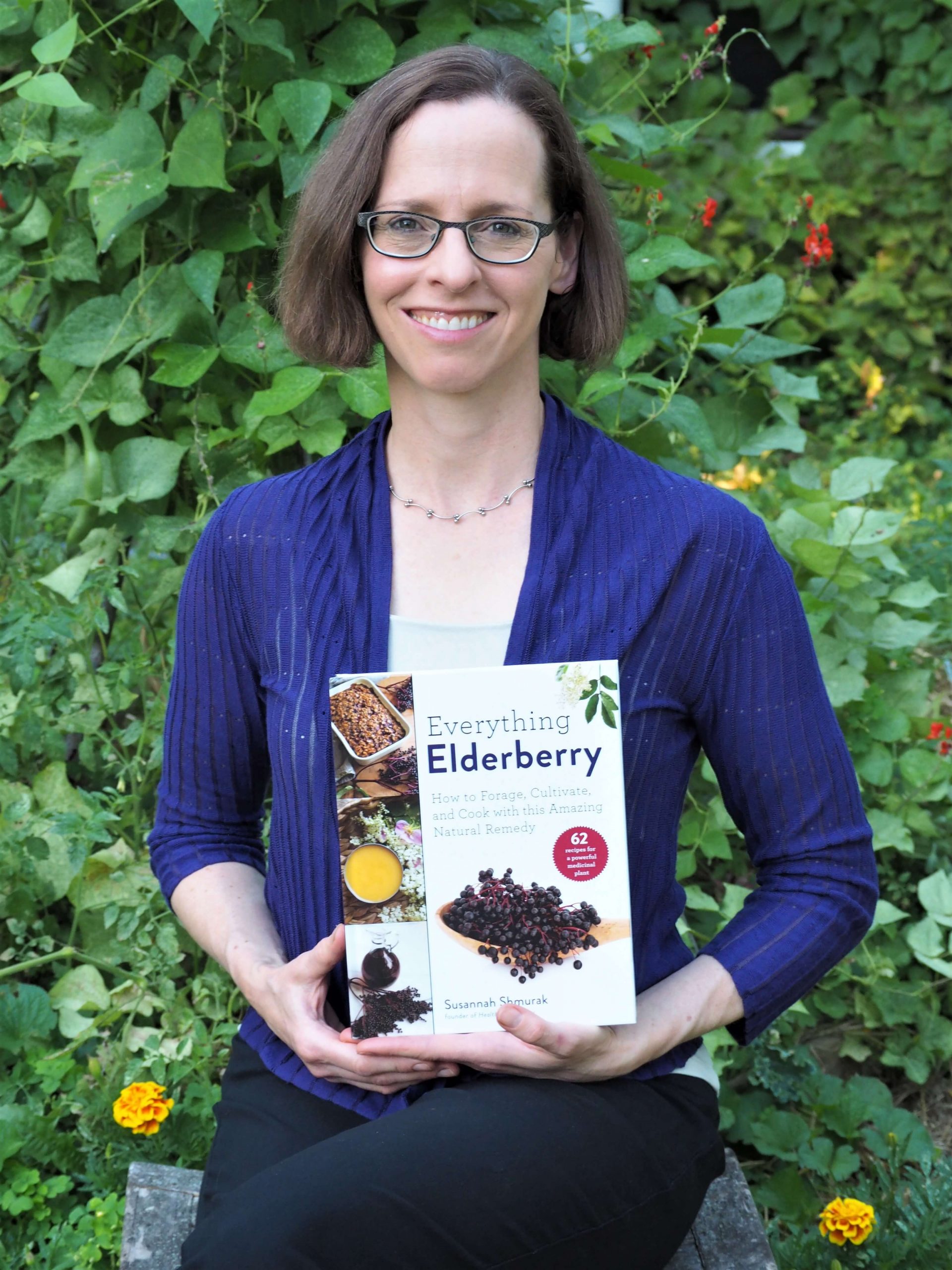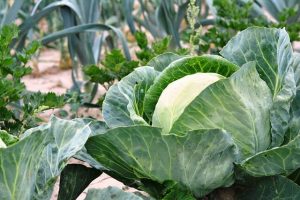Last Updated on February 14, 2025
Find out how to grow cabbage for winter and extend your harvest season! Cold-hardy cabbage can tough out the cold and give you something fresh and green to eat from your garden even when most of your plants have succumbed to frost. It also keeps well in the fridge, making it a perfect winter comfort food.
Delicious in salads and slaws, it’s also fabulous roasted or in stir fries or soup and perfect for making homemade sauerkraut. Your gut and long term health will thank you for incorporating more cabbage into your diet.
Here’s all you need to know about growing cabbage.

This is a guest post from Ann Sanders of A Green Hand on how to grow cabbage for winter.
I grow a lot of vegetables, and cabbage is definitely my favorite. Whether in a salad or roasted in the oven, winter cabbage makes a delicious and healthy addition to any meal!
How to Grow Cabbage for Winter: What You Need
Your first step in growing cabbage is choosing your seeds or starts. (If you’re a newer gardener, you might have better luck buying plants that a pro has started for you. A 4-pack at your nursery should only cost a couple dollars.)
Your plants will be happiest if you have some compost or sulphur powder to add to the soil as well as companion plants like beans, beetroot, lettuce or potatoes.
Cabbage also works as a spinach companion plant.
Related: How to Grow Food in a Small Garden
How to Grow Cabbage: Choose Which Variety to Grow
Since you’ll be leaving your cabbage in the garden till winter, you need to choose varieties with good cold tolerance. Winter cabbages tend to grow smaller heads. Savoy cabbages are the hardiest. Winter cabbages require a long growing season, so make sure you sow them by late spring or early summer.
Three varieties of winter cabbage I recommend: Tundra F1 (very frost-hardy with a great taste), Kilaton F1 (high yielding) and Wintessa F1 (a late maturing Savoy).
How to Grow Cabbage: Sowing Seeds
You can sow seeds directly in the garden or start plants inside. To start seeds indoors, sow seeds in small pots or trays with a seed-starting medium. They do not need heat to germinate. Allow seedlings to grow until they have three pairs of leaves and then transplant them to open ground on a cloudy day and water well. Plants might need protection from strong sun rays and dry winds in the initial weeks after you transplant them.
To direct seed: Between May and July, make holes about ½” deep with 9-24″ between plants. More space between plants may allow larger heads to grow. Thin plants that are crooked or don’t look healthy.
Water the seedlings daily and never let the soil dry out. Plants will require about 2″ of water per week. Mulch well to conserve moisture and discourage weed growth.
How to Grow Cabbage: Protecting your Plants
Keep an eye out for cabbage moths and their larvae. Using floating row covers can prevent moths from laying eggs on your plants and also provide protection from weather. You can handpick any larvae you find, or use neem oil to control them.
How to Grow Cabbage: Amend the Soil
Cabbages prefer a slightly acidic soil. If you have an alkaline soil, you can balance it with organic manure or sulphur powder. Make sure that you check the pH after amending the soil. Use manure or compost to side dress the maturing heads of the cabbages.
How to Grow Cabbage: Companion Plants
Companion plants like beans, potatoes, lettuce, celery, peas or beets can help your cabbage plants thrive. Consider interplanting these vegetables with your cabbage.
Related: How to Get Free Plants
How to Grow Cabbage: Harvesting
When your cabbage heads reach the desired size, cut with a sharp knife at the base. If you’re harvesting early, you may get additional heads to grow if you leave the outer leaves and roots in place. New small heads will appear — pinch off all but four, and harvest when they’ve gotten to the size of a tennis ball.
How to Extend Your Winter Cabbage Season
Cabbages sown in June and July can be harvested between November to March, depending on your climate. (In severe climates, you need to harvest before a hard freeze. A few varieties can make it as low as 10 degrees, but many won’t. Be sure to time your plantings accordingly.)
Related: How to Grow Vegetables Indoors
In milder climates, planting fall crops is a great way to get the most out of your garden space. A little planning can extend the harvest of winter cabbages long into the fall and even in winter. Unlike spring-planted crops that need protection from late frosts, fall crops are frost-tolerant and even have improved taste from light frost.
Sow as late as the end of the August, but after that, your young cabbages are unlikely to thrive.
Ready to plant some delicious winter cabbage? Me, too!
Ann Sanders is founder of A Green Hand, where she shares tips for cultivating all kinds of plants. Follow her on Facebook and Twitter.
Need more garden inspiration? Check out some of my favorite crops:
- How to Grow Spinach
- How to Grow Spaghetti Squash
- Edible Landscaping 101: Growing Fruit
- How to Grow Melons in Cool Climates
- How to Grow Garlic
- 9 Ways to Grow Food in a Small Garden
- How to Grow Rhubarb
Growing your own food is easier than you might think. Find out how total newbies can get started right away with a FREE quickstart guide.
Pin to save these instructions on how to grow cabbage for later!

Susannah is a proud garden geek and energy nerd who loves healthy food and natural remedies. Her work has appeared in Mother Earth Living, Ensia, Northern Gardener, Sierra, and on numerous websites. Her first book, Everything Elderberry, released in September 2020 and has been a #1 new release in holistic medicine, naturopathy, herb gardening, and other categories. Find out more and grab your copy here.



 Hi, I'm Susannah, a garden geek, energy nerd, and fan of healthy food and natural remedies. Need some simple, practical solutions for living healthier and greener? You've come to the right place! More about me and my green projects
Hi, I'm Susannah, a garden geek, energy nerd, and fan of healthy food and natural remedies. Need some simple, practical solutions for living healthier and greener? You've come to the right place! More about me and my green projects